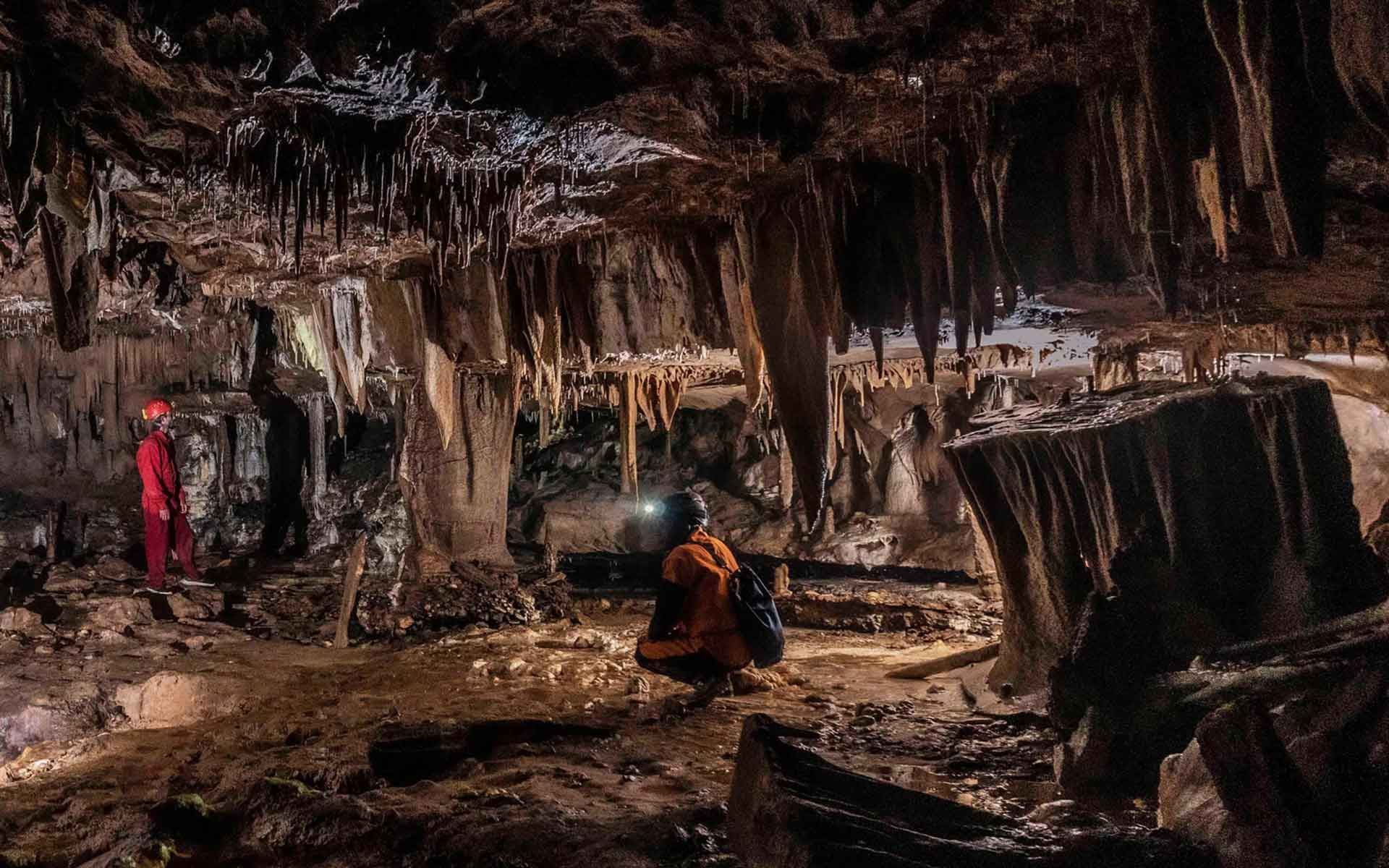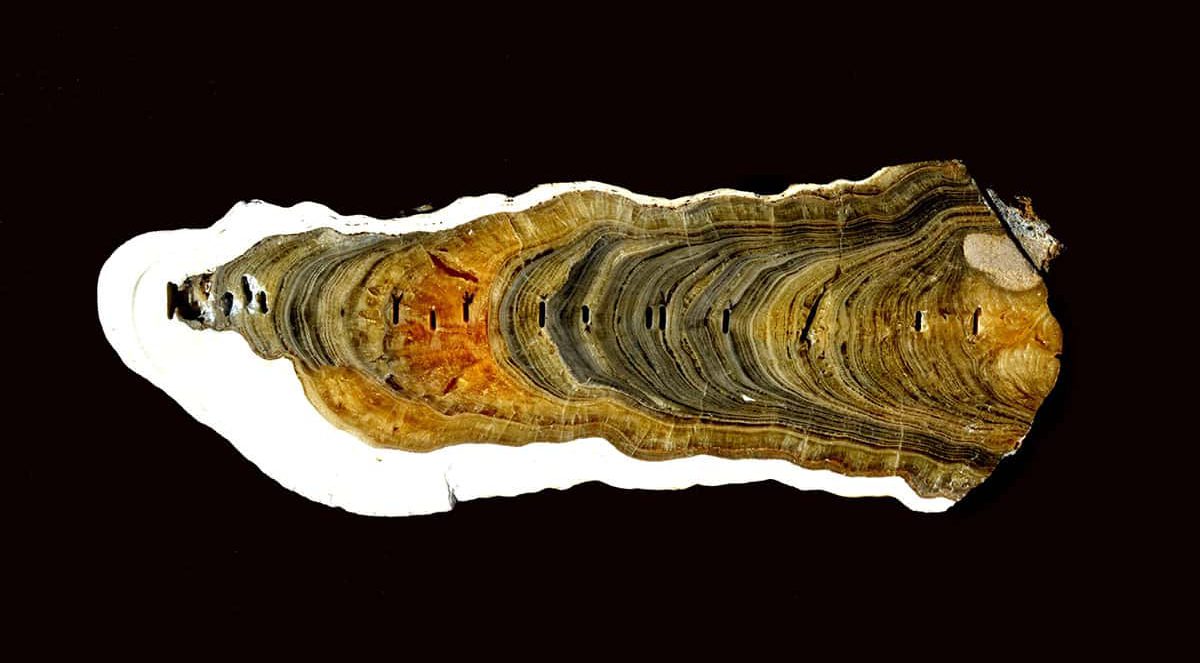
Hanging Garden: Mawmluh cave stalagmites and stalactites, Meghalaya, India. (Photo: Gerald Samuel Duia).
Geological Period
Holocene Meghalayan Stage
Main geological interest
Stratigraphy and sedimentology
Location
Mawmluh, East Khasi Hills District, Meghalaya, India.
25°15’30.0″N, 91°42’57.0″E
Hanging Garden: Mawmluh cave stalagmites and stalactites, Meghalaya, India. (Photo: Gerald Samuel Duia).
The GSSP of youngest unit of the Geologic Time Scale associated with dramatic climate changes with implications on human civilization.
The site is the GSSP for the Meghalayan Stage of Holocene Series. The stalagmite sample of Mawmluh cave has shown that they were not subjected to diagenesis and erosion and that they are suitable for preserving chemical signatures. The stalagmite has preserved a very high-resolution record of Holocene palaeoclimate and palaeomonsoon. Intensive Oxygen Isotope analyses revealed that around 4,200 yr BP, there was a mega-draught event that devastated many civilizations. The more intense period of weakened monsoon occurred from 4071 to 3888 yr BP and marked as nearly a Global event.
- Geological description
The Mawmluh Cave is formed along the contact between Early Eocene Lakadong dolomite of Sylhet Limestone Formation and the Therria Sandstone Formation (Gogoi et al., 2009). At present, the cave is 7.2 Km long maze with many openings and decorated with stalactites, stalagmites, columns, drapes and moon milk.
The Meghalayan Stage is the newest entrant in the geologic history of the Earth and; latest of three subdivisions of the Holocene Epoch. The International Commission on Stratigraphy officially ratified it along with the earlier Greenlandian and Northgrippian Stages (Walker et al., 2018). The lower boundary of the Meghalayan Stage is defined at a specific level in a stalagmite of Mawmluh Cave. The uranium series dated Upper Pleistocene to Upper Holocene stable isotope profile shows a marked shift to heavier isotopic values at ~4.2 ka, reflecting an abrupt reduction in precipitation due to a weakening of the monsoon across the Indian sub-continent and southeast Asia (Berkelhammer et al 2012). Due to abrupt mega-drought, the agriculture-based society were nearly collapsed. The 4.2 ka event was global or near global in nature and constitutes a timestratigraphic marker (Walker et al., 2018).
- Scientific research and tradition
Speleothems of Mawmluh Cave, Meghalaya has been extensively studied by many researchers. The Working Group of The Subcommission on Quaternary Stratigraphy (SQS) of the International Commission on Stratigraphy (ICS) proposed the subdivision of the Holocene Series and later IUGS formally ratified and accepted the three fold classification with youngest Stage ‘Meghalayan’ in the year 2018.
- Reference
Berkelhammer, M. et al. (2012) ‘An Abrupt Shift in the Indian Monsoon 4000 Years Ago’, in Climates, Landscapes, and Civilizations. American Geophysical Union (AGU) (Geophysical Monographs Series), pp. 75–87. Available at: https://doi.org/10.1029/2012GM001207.
Gogoi, B. et al. (2009) ‘Foraminiferal biostratigraphy and palaeoenvironment of the Lakadong Limestone of the Mawsynram area, south Shillong Plateau, Meghalaya’, Pal. Soc. India, 54, pp. 209–224.
Huguet, C. et al. (2018) ‘Temperature and Monsoon Tango in a Tropical Stalagmite: Last Glacial-Interglacial Climate Dynamics’, Scientific Reports, 8(1), p. 5386. Available at: https://doi.org/10.1038/s41598-018-23606-w.
Walker, M. et al. (2018) ‘Formal ratification of the subdivision of the Holocene Series/ Epoch (Quaternary System/Period): Two new Global Boundary Stratotype Sections and Points (GSSPs) and three new stages/ subseries’, Episodes, 41(4), pp. 213–223. Available at: https://doi.org/10.18814/epiiugs/2018/018016.
- Author(s)
Satish C. Tripathi
The Society of Earth Scientists, Lucknow, India
Sabyasachi Shome
Former Dy. Director General / Geological Survey of India


